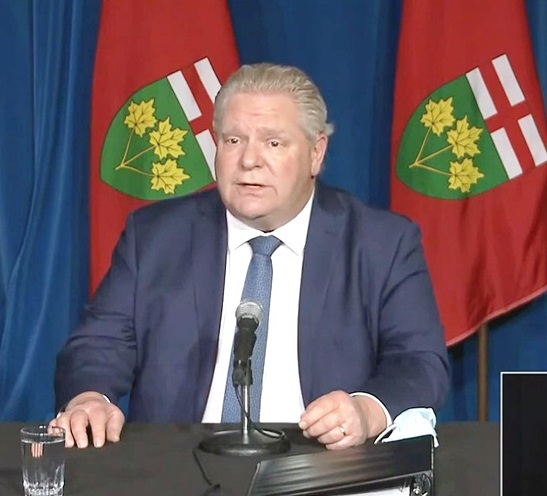MPP Amarjot Sandhu’s Statement and Highlights on Ontario Budget 2020
Ontario Budget 2020 Ontario’s Action Plan: Protect, Support, Recover
Statement:
“Finance Minister Rod Phillips released Ontario’s Action Plan, a comprehensive action plan to respond to the serious health and economic impacts of COVID-19, which sets out a total of $45 billion in support over three years to make available the necessary health resources to continue protecting people, deliver critical programs and tax measures to support individuals, families and job creators impacted by the virus, and lay the groundwork for a robust long-term economic recovery for the province,” said Amarjot Sandhu, Member of Provincial Parliament for Brampton West.

Amarjot Sandhu
Member of Provincial Parliament
Brampton West
For Peel:
Ontario’s Action Plan: Protect, Support, Recover is the next phase of the most comprehensive action plan in Canada to respond to the serious health and economic impacts of COVID-19. The 2020 Ontario Budget sets out a total of $45 billion in support over three years to make available the necessary health resources to continue protecting people, deliver critical programs and tax measures to support individuals, families and job creators impacted by the virus, and lay the groundwork for a robust long-term economic recovery for the province.
- Investing an additional $116.5 million to create up to 766 more beds at 32 hospitals and alternate health facilities across the province. Making more beds available to patients will help reduce surgical backlogs and improve access to care during COVID-19. This funding builds on the province’s $2.8 billion COVID-19 Fall Preparedness Plan, Keeping Ontarians Safe: Preparing for Future Waves of COVID-19.
- The new hospital beds are in addition to the $234.5 million investment for 139 critical care beds and 1,349 hospital beds included in Ontario’s fall preparedness plan. These beds will add more capacity for hospitals in COVID-19 hotspots such as Peel Region and those facing occupancy pressures and support the continuation of surgeries and procedures.
- William Osler Health System will be receiving up to 87 total patient beds to help alleviate hospital capacity pressures and reduce wait times. This includes up to 41 hospital beds and four additional critical care beds at Brampton Civic.
- Providing seniors a safe place to live and appropriate levels of care when they need it. The Province is addressing long-standing challenges in the long-term care system and accelerating the development of long-term care beds. Construction is underway for the Faith Manor Redevelopment project, which will build 40 new long-term care beds and upgrade 120 long-term care beds in Brampton.
- Building smarter to get shovels in the ground faster for long-term care homes in places like Ajax, Toronto and Mississauga and committing to collaborating with hospitals and municipal partners to accelerate project delivery for the benefit of seniors and their families.
- Welcoming and supporting the decision by Roche to invest $500 million over five years to establish a Global Pharma Technical Operations site to oversee its global supply chain in Mississauga. This investment is expected to create 500 jobs ― 200 by the end of 2020 and up to 300 more by the end of 2023. It will enhance Ontario’s competitiveness and leadership in the life sciences sector.
Highlights of Ontario’s Action Plan: Protect, Support, Recover:
Protect — $15.2 billion, including $7.5 billion in new funding, for the government’s urgent response to COVID-19. Highlights of the new funding include:
- Increasing average daily direct care from a nurse or personal support worker (PSW) per long- term care resident to four hours a day over a four-year period, making Ontario the leader among Canadian provinces in protecting our seniors.
- Making available $4 billion in 2021-22 and a further $2 billion in 2022-23 in dedicated support to protect people’s health and to support the fight against the COVID-19 pandemic.
- Opening the new Cortellucci Vaughan Hospital site with a new emergency room, state-of-the-art diagnostic imaging and operating rooms. This is the first newly built hospital to open in Ontario in 30 years that adds net new capacity to the system.
Support — $13.5 billion, including $2.4 billion in additional supports for people and jobs. Highlights of the new funding include:
- Providing $380 million to parents through another round of payments, following the $378 million of funding in March of $200 per child up to 12 years old and $250 per child and youth with special needs up to 21 years old, through the Support for Learners initiative. This will assist with added costs of COVID-19, such as technology for online learning. This means a family with three young children, one of whom has special needs, would receive $1,300 in 2020 to support costs related to educational supplies and technology.
- Proposing the new Seniors’ Home Safety Tax Credit for the 2021 taxation year — a 25 per cent credit on eligible renovations of up to $10,000 — to help seniors stay in their homes longer by making their homes safer and more accessible. Seniors would be eligible regardless of their incomes and whether they owe income tax for 2021. Family members who live with them and support them would also be eligible.
- Investing an additional $60 million over three years starting in 2020-21 in the Black Youth Action Plan, doubling its base funding to extend the current program and create a new economic empowerment stream that will support Black youth in achieving social and economic success.
- Investing $100 million over two years for the Community Building Fund to support community tourism, cultural and sport organizations which are experiencing significant financial pressures due to the pandemic.
- Providing one-time emergency funding of $25 million for Ontario’s arts institutions to help cover operating losses incurred as a result of COVID-19.
- Providing an additional $1.8 billion in the Support for People and Jobs Fund over the next two years, 2021-22 and 2022-23, to remain responsive to emerging needs and continue providing supports for the people of Ontario.
Recover — $4.8 billion in new supports to build the foundation for a strong recovery fuelled by economic growth. Highlights include:Making additional investments of over $680 million over the next four years in broadband infrastructure which, combined with its prior commitments, increases Ontario’s investment to a historic nearly $1 billion to ensure communities across the province are connected.
- Bringing more jobs to Ontario with a comprehensive plan to address the job-killing high costs of electricity, saving medium-size and larger industrial and commercial employers about 14 and 16 per cent respectively, on average, on their electricity bills (at an additional expense of $1.3 billion over three years).
- Reducing property taxes on job creators and levelling the playing field by lowering high Business Education Tax (BET) rates for over 200,000 employers, or 94 per cent of all business properties in Ontario, to a rate of 0.88 per cent. This is creating $450 million in immediate annual savings and representing a reduction of 30 per cent for many businesses currently subject to the highest BET rate in the province.
- Responding to requests from local governments by proposing to provide municipalities with the ability to cut property tax for small businesses and a provincial commitment to consider matching these reductions. This would provide small businesses as much as $385 million in total municipal and provincial property tax relief by 2022-23, depending on municipal adoption.
- Ending a tax on jobs for an additional 30,000 employers by proposing to make permanent the Employer Health Tax (EHT) exemption increase from $490,000 to $1 million. With this additional relief about 90 per cent of employers would pay no EHT, saving them $360 million in 2021-22 that could be reinvested in jobs and growth.
- Committing to provide Ontario residents with support of up to 20 per cent for eligible Ontario tourism expenses to encourage them to safely discover Ontario in 2021, the year of the Ontario staycation.
- Connecting workers in the tourism and hospitality sector and others most affected by the pandemic to training and jobs with an investment of $180.5 million over 3 years, including a skilled trades strategy, an additional $100 million of dedicated investments through Employment Ontario for skills training, a redesigned Second Career program, and $59.5 million to acquire in- demand skills.
Providing $500 million over four years to make government services more reliable, convenient and accessible through the Ontario Onwards Acceleration Fund.
- The 2020 Budget provides transparency amidst a world of uncertainty, by outlining a flexible medium-term fiscal plan based on the latest economic projections. It also presents alternative scenarios demonstrating how the province’s fiscal outlook could change depending on the pace of the economic recovery.
- The government is projecting a deficit of $38.5 billion for 2020-21, which is unchanged from the deficit forecast at the time of the 2020-21 First Quarter Finances and reflects urgent spending necessary for the fight against COVID-19.
Over the medium term, the government is forecasting steadily declining deficits of $33.1 billion in 2021-22 and $28.2 billion in 2022-23. Acknowledging the continued uncertainty of the global pandemic, the government plans to table a multi-year plan including a path to balance in the 2021 Budget by March 31, 2021.









